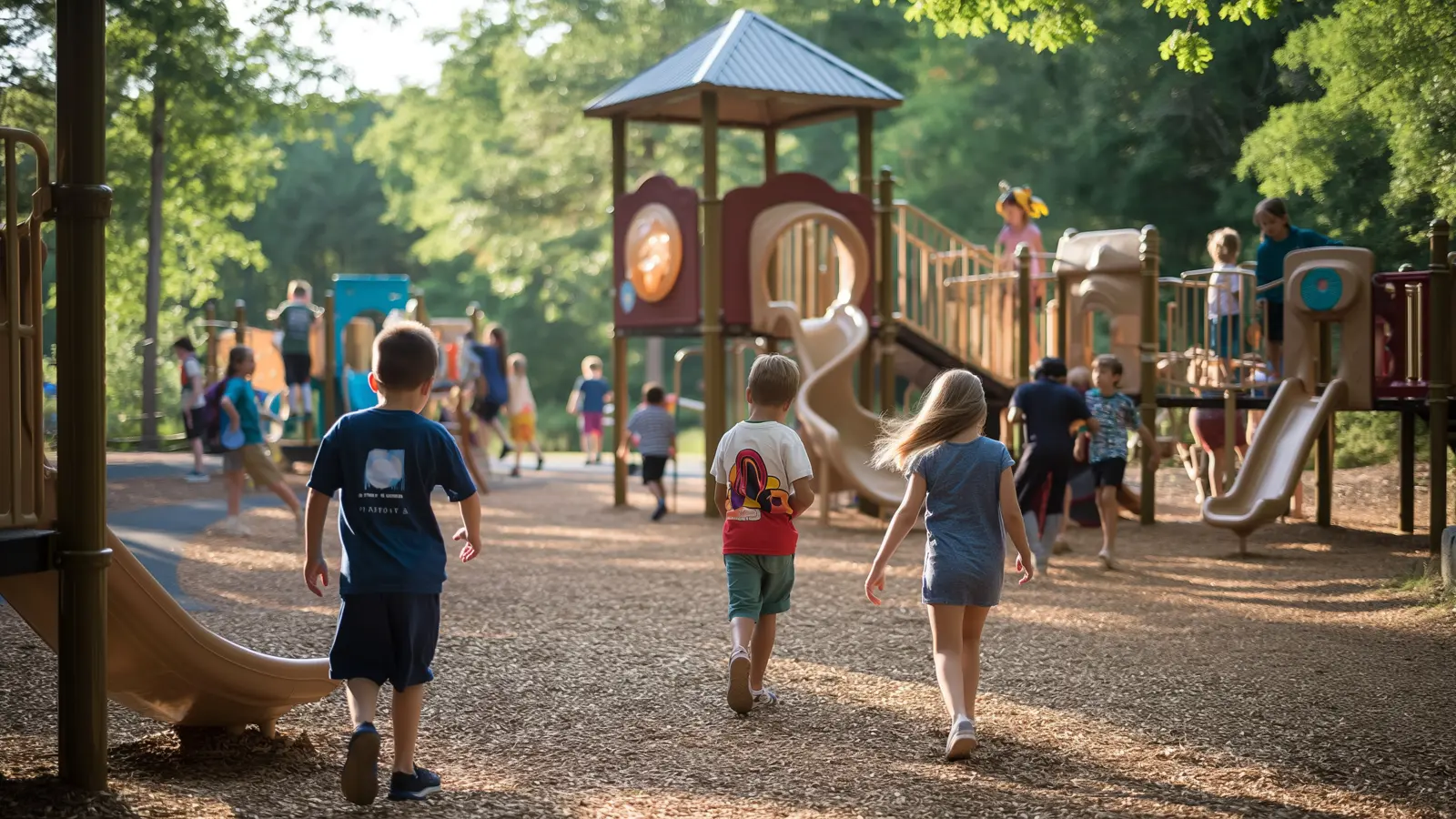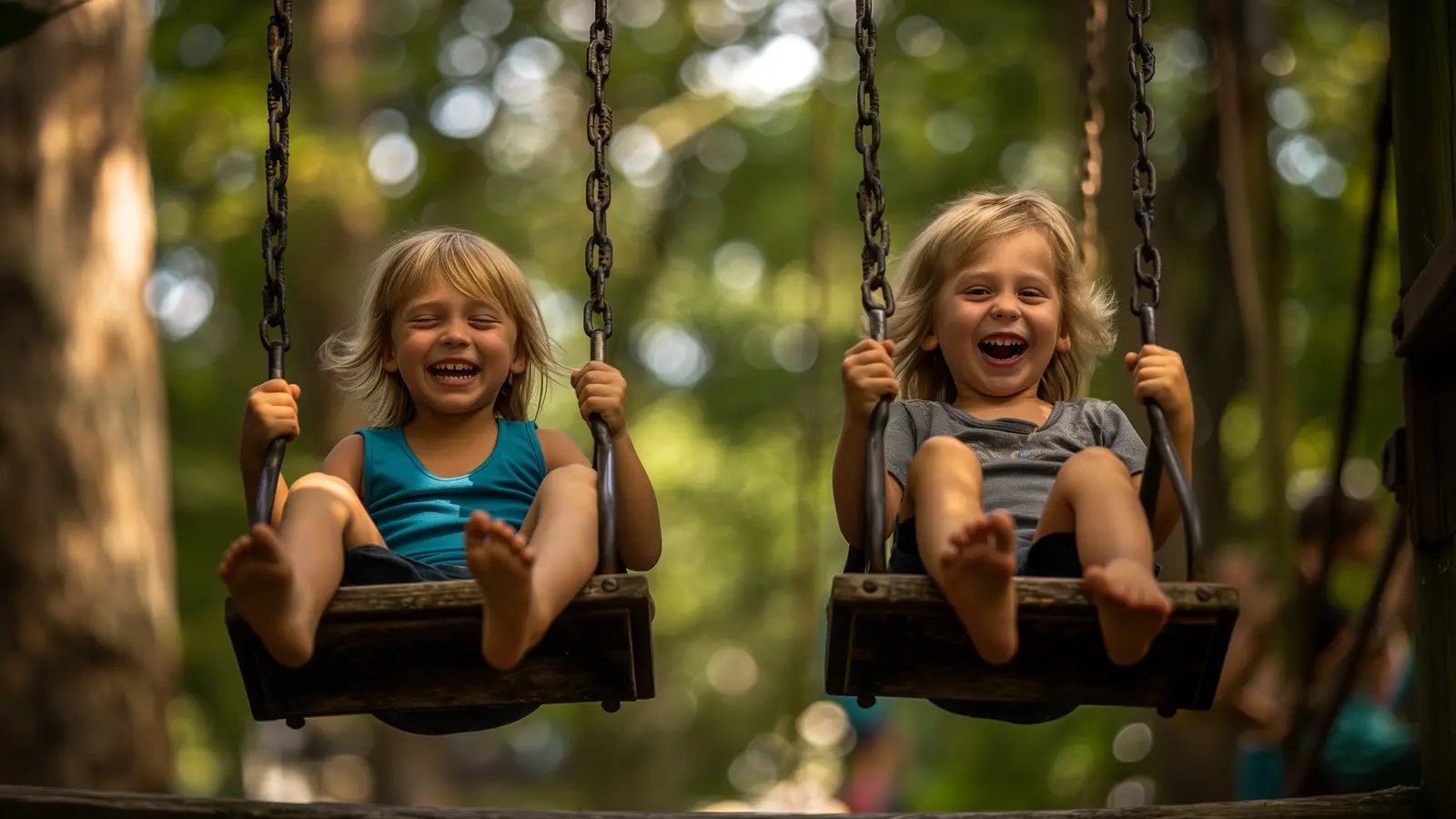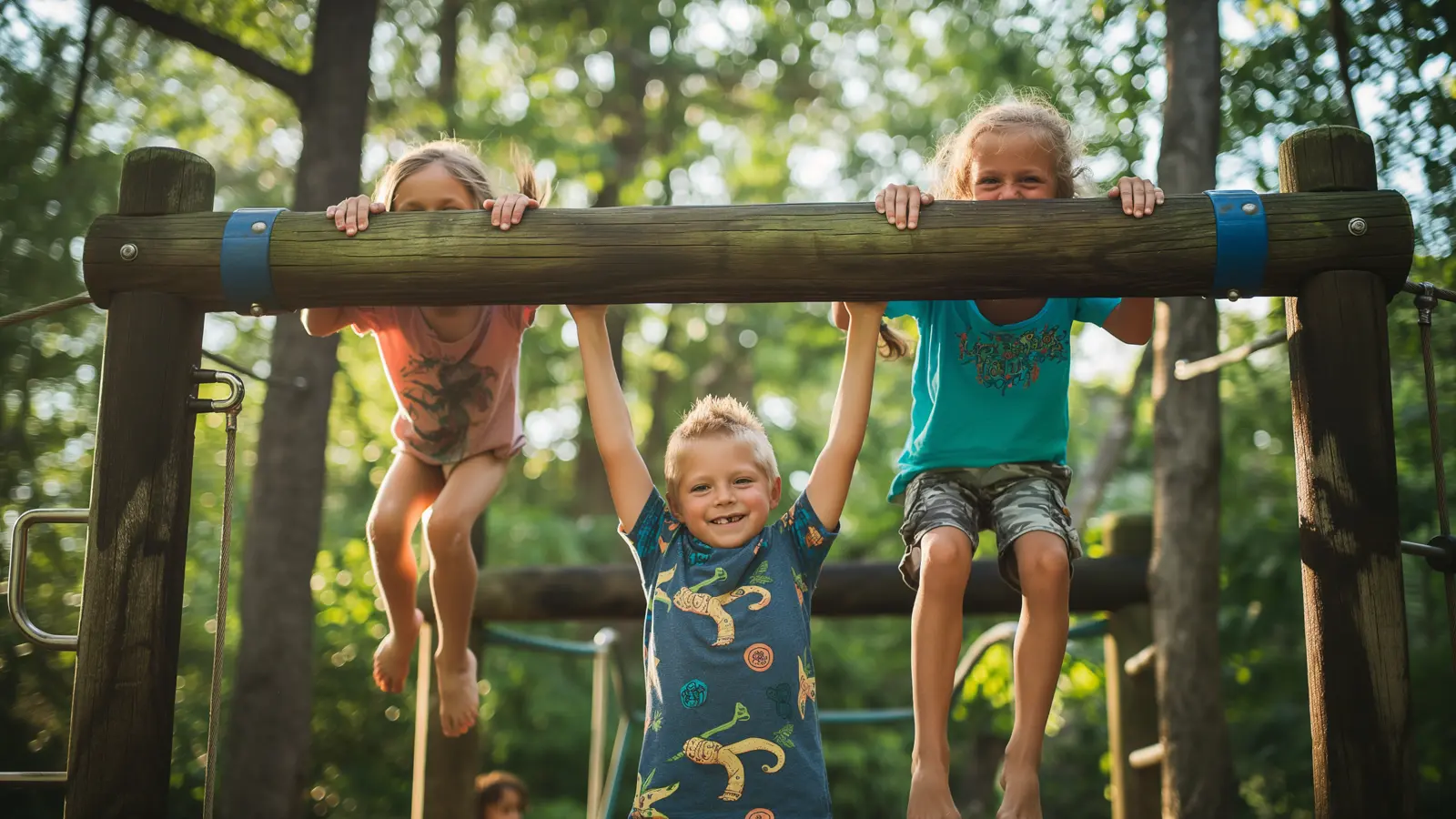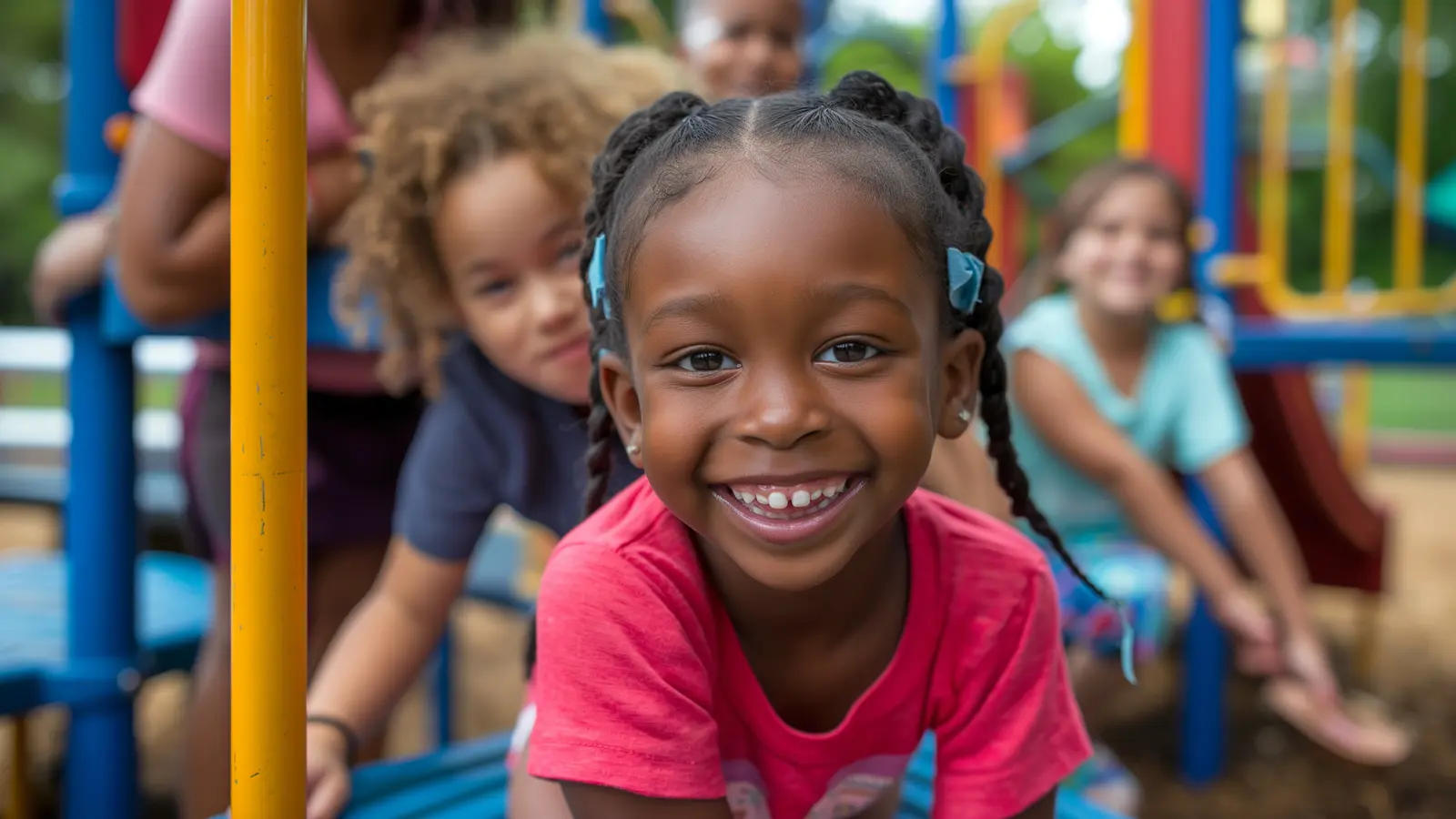2024-06-28
Tips for Summer Safety at the Playground
As summer approaches, playgrounds become a hive of activity, with children eager to enjoy the warm weather and play with friends. The allure of slides, swings, and climbing structures is irresistible for kids, offering them a chance to expend energy, develop physical skills, and socialize with peers. However, this increased activity also increases the risk of accidents and injuries. Ensuring playground safety becomes paramount, as, every year, more than 200,000 children experience injuries on the playground annually. These injuries can range from minor cuts and bruises to more severe fractures and concussions, underscoring the need for proactive safety measures.
Parents and caregivers play a crucial role in maintaining a safe play environment. Vigilance is key—constantly supervising and teaching children how to use playground equipment can prevent many accidents. Instructing kids on using slides, swings and climbing structures correctly is important, as well as emphasizing the need to play safely and be mindful of other kids around them. Additionally, adults should regularly inspect the playground for hazards such as broken equipment, sharp points, or surfaces that could get dangerously hot under the sun. Parents and caregivers can create a secure and enjoyable playground experience for all children by combining attentive supervision with clear safety instructions.


Understanding Playground Safety Basics
Playground safety starts with adult supervision. Always watch children closely, ensuring they use playground equipment appropriately. Vigilant supervision can prevent many accidents and allow adults to intervene quickly if a child is misusing equipment or engaging in risky behavior. But it’s not just about supervision. Teaching kids about safe playground practices is essential. They should understand the importance of not pushing or shoving and waiting their turn, fostering a respectful and orderly environment. This is crucial in crowded settings like a school playground, where many children play simultaneously.
Ensuring age-appropriate equipment is another critical aspect of playground safety. Younger children may not have the physical abilities or coordination required for more advanced play structures, increasing the risk of injury. Therefore, separating play areas based on age groups and skill levels can help prevent accidents. It’s also important to teach kids how to use the equipment correctly, such as climbing safely, holding onto bars tightly, and sliding down feet first. By doing so, children can enjoy their playtime while minimizing the risk of injury.
To cushion falls and reduce the risk of serious injuries, ensure the play area is covered with safety-tested rubber, wood chips, mulch, or pea gravel. These materials provide a softer landing surface, minimizing the impact if a child falls. Kids should wear clothes that won’t get caught on equipment, avoiding items like scarves, drawstrings, and necklaces that pose a strangulation hazard. Regularly inspect playground equipment for sharp points, broken parts, and other hazards. Additionally, ensure that children maintain a safe distance from moving equipment and other children to prevent collisions and accidents. By taking these precautions, parents and caregivers can create a safer playground environment where kids can play freely and safely.


Safe Practices for Common Playground Equipment
Understanding how to use specific playground equipment safely is essential in preventing injuries. Different types of equipment pose other risks, and children should know how to use each correctly. Protective surfacing should be extended in front and back of a swing to a distance twice the height of the bar from which the swing is suspended. Here are some essential safety practices for common playground equipment:
Slides:
- Always slide down feet first and sitting, ensuring kids understand the importance of “slide feet first” to land on both feet.
- Ensure children wait for the slide platform to be clear before sliding.
- Be cautious with metal slides, which can become dangerously hot in the sun.
Swings:
- Teach kids to stop the swing completely before getting off.
- Make sure children swing completely before getting off to avoid accidents.
- Hold tightly with both hands and keep knees slightly bent.
- Stay a safe distance from moving equipment and beware of swinging feet.
Climbing Equipment:
- Stress the importance of landing on both feet with knees slightly bent when using climbing equipment.
- Ensure kids do not drop from the bars, as this can cause serious injuries.
- Use age-appropriate climbing structures to minimize risks.
Following these guidelines can significantly reduce the risk of injuries on playground equipment. But it’s not a one-time thing. Regularly remind children about these safety practices and ensure they understand the importance of following them every time they play. Consistent reinforcement of these habits can lead to a safer playground experience for everyone, giving you peace of mind and children the confidence to play freely and safely.


Preventing and Handling Playground-Related Injuries
Following Consumer Product Safety Commission guidelines can help enhance playground safety and prevent injuries. Nearly half of playground-related injuries occur on school playgrounds, highlighting the need for vigilance and proper supervision. Installing surfaces like wood chips, mulch, or safety-tested rubber in play areas can cushion falls and reduce injury severity.
Parents and caregivers should educate children about staying safe from other children and play equipment to prevent collisions and injuries. It’s important to regularly inspect playground equipment to ensure it is in good condition and free of hazards that could get caught on equipment. Remind children to stop swings and ensure they swing entirely before getting off to prevent accidents.
Key Prevention Tips:
- Use surfaces like wood chips, mulch, or safety-tested rubber to cushion falls.
- Ensure kids stay a safe distance from moving equipment and other children.
- Regularly inspect playground equipment for sharp points and potential hazards.
- Teach children to stop the swing completely before getting off.
- Educate kids on safe practices when using vertical and horizontal suspending bars.
Children should avoid sharp points when playing on vertical and horizontal suspending bars and understand the importance of safe practices. Supervision and proper education can significantly reduce the risk of childhood injuries on the playground.


Creating a Safe Haven: Ensuring Playground Safety for a Fun Summer
Playground safety is essential for a fun and injury-free summer. We can significantly reduce the risk of playground-related injuries by prioritizing adult supervision, regular equipment checks, and educating children on safe playground practices. Parents and caregivers are crucial in monitoring play areas and ensuring children understand the importance of following safety guidelines. This vigilance helps create a safer environment where kids can enjoy their playtime without unnecessary risks.
Teaching kids about playground safety is not just about preventing injuries; it’s also about fostering a sense of responsibility and awareness. When children are educated on using playground equipment correctly, interacting safely with other kids, and taking turns, they are more likely to play responsibly. This education should include practical advice, such as always landing on both feet when using climbing equipment and staying safe from moving swings. These lessons keep children safe and build their confidence and independence.
Ensuring play areas are equipped with safety-tested materials like wood chips, mulch, or rubber surfaces adds an extra layer of protection. Regular maintenance and checks for potential hazards, such as sharp points or broken equipment, are vital. Creating an environment that prioritizes safety allows children to enjoy the playground to its fullest potential. When kids are well-informed about playground safety and supported by vigilant supervision, they can have fun, make friends, and explore their surroundings confidently and joyfully.














